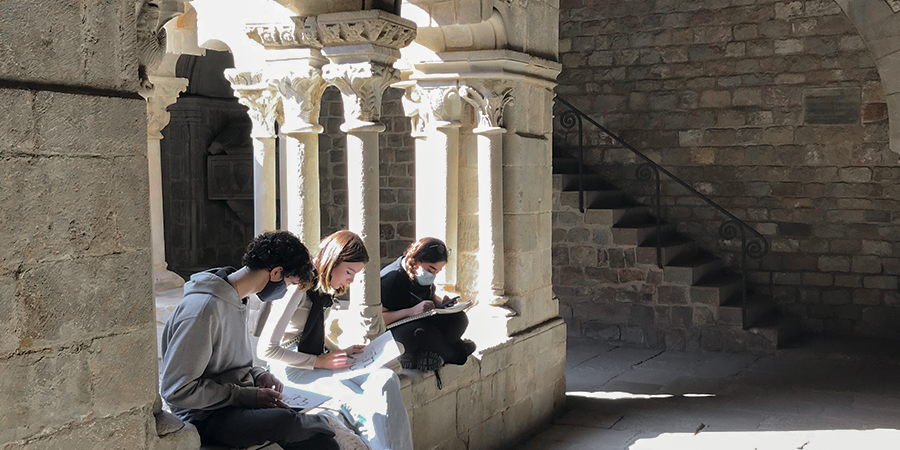- Most viewed
- Last viewed
“The city is like an open book”
Kathrin Golda-Pongratz (Augsburg, 1971) holds a PhD in Architecture and Urbanism. She studied in Germany and did an Erasmus in Barcelona, a city to which she would return years later. She did her final degree project in Mexico. “Mexico changed my perspective and allowed me to have a more holistic point of view.” Later, she was in Lima (Peru) to continue to study Latin American cities. Her doctoral thesis focused on the change of structure and meaning of the Lima’s historic centre in the context of the rapid growth in the twentieth century. One of her first projects in Barcelona stemmed from the UIC Barcelona Vertical Workshop in 2006 and years later, she became a lecturer at the UIC Barcelona School of Architecture, where she currently teaches
You teach different subjects at the UIC Barcelona School of Architecture. Could you tell me something about your methodology?
On the first day of the subject Introduction to the History of Architecture, we asked the students for a photo of their favourite building, which can be a building like the Eiffel Tower, of course, but preferably we ask them to choose a building in their area or one they are familiar with, such as their grandparents’ house or any other building connected to a beautiful experience. That’s when we see where they are coming from, what concepts of aesthetics and understanding of space they have. Seeing that students come from so many different places is fascinating. We realise that we shouldn’t be so Eurocentric when we explain the history of architecture but consider where everyone is coming from.
And in the subject Cooperation?
In Cooperation, we work with a specific neighbourhood in Lima, Peru. We talk directly to people who have ideas about what could be improved in their neighbourhood. Cooperation subject students analyse what the problems are and where intervention should take place through direct contact with the population and learning the experiences of the place. The figure of the architect, besides a person who executes, can also be a facilitator.

Cities can help us understand the past through the history of their streets. How do we read cities?
If you live in a historic city, you can see how the superficial and material parts of the city have been transformed. The texture of a facade is a mark of the past, and if you get used to looking carefully, you can better understand what has become of that city even without having read a book about its history, because the city itself is a little like that, it is like a history book, an open book.
Cities also have a lot of importance in our present. How do you think that urban layouts influence our daily lives as citizens and as a society?
Urban layouts have a great influence on our lives. For example, I live in Ciutat Vella, in a very densely populated area, but I live in a square. There is light, there is ventilation. The layouts have a lot of influence depending on contact with the neighbours, visual connections, if we have light… In the Eixample, for example, you can have a lot of light and a lot of openness, but at the same time there is also traffic, and a lack of green spaces, which also has an impact on you as a citizen. Now they are trying to give more prominence to the pedestrian, after nearly a century of increasing motorisation of the city. And an urban structure can also suggest the social mix: the Eixample de Ildefons Cerdà is not a structure for a certain social class, he was very clear about that.
What do you think the Barcelona will be like in the future?
We must consider climate change, that the sea level will rise... The city will have to say goodbye to being a car-oriented city. This is something that Barcelona has to do, but so do all the other cities. We need to reduce pollution, look for much more sustainable construction methods, and recycle and transform instead of building. Today, I see that the city is taking steps in this direction. We have to rethink our consumerism and exploitation of the territory. Another great challenge is true inclusion and coexistence with people who come from other contexts, who greatly enrich the city. The local culture can, or more importantly, must mix with other cultures.
You spoke about the cities of the future at Disputatio, in Barcelona, a few months ago. What did you talk about?
The Disputatio is a publication that, from the European Academy of which I am a member, has a certain tradition and prestige. In the last Disputatio, we brought to the table ideas about the cities of the future, incorporating digitalisation; what it means for urban life and for the management of its infrastructures and networks. The idea of Smart Cities is a threat and at the same time a challenge that we must take on.